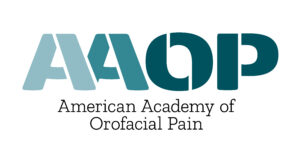
Member Spotlight

Dr. Robert Merill
Dr. Merrill completed a Fellowship in Pain Management in the UCLA Pain Management Center in 1990 and was appointed a clinic director of the Orofacial Pain Clinic in 1991. He started private practice in Orofacial Pain in 1990 and began to develop the Graduate Orofacial Pain Residency Program from 1991 to 1995. In 1995, he was asked to come to UCLA as a full time instructor and become part of the Orofacial Pain Faculty Practice and Director of the Orofacial Pain Program.
He became boarded by the American Board of Orofacial Pain and was appointed director for developing the ABOP Oral Board Exam. He developed the Dental Sleep Medicine Program at UCLA, making UCLA the first Dental School in the world to teach Dental Sleep Medicine as part of its graduate program and to offer a Continuing Education Mini-Residency in sleep medicine.
Retired from UCLA in 2019.
Q&A
1) How did you get interested in the field of Orofacial Pain?
I became interested in TMJ problems in the mid- 1970’s when I attended the Annual CDA convention in Anaheim and happened to sit in on a lecture by a TMJ “specialist” who was discussing TMD. He was using chiropractic muscle testing approach to show that TM disorders were cause by misalignment of the neck and jaw. I was so offended by that lecture, I decided that I needed to know more about the disorder. Eventually, I enrolled in UCLA’s Oral Biology Master’s program in 1985 and began studying in the dental school’s TMD clinic. I learned that there was a great controversy in the diagnosis and treatment of TM disorders. After completing the work for my master’s degree I was offered a fellowship in UCLA’s Pain Management Center in 1988 and spent 2 years in that program learning the broader spectrum of head and neck pain.
2) How do you feel that the field of Orofacial pain has evolved over the years?
When I became involved as both a clinician and student in the management of TMD’s, the primary focus of dental school programs and dental CE around the country was on TM disorders. The professional organization for Temporomlandibular Disorders was organized in the 1970’s as the Academy of Craniomandibular Disorders but was essentially focused on TMD. Sister academies around other countries around the world were organized in a similar fashion and kept their focus on TMD’s. In early 1980, the UCLA Pain Management Center began taking on Dentists who were interested in studying the PMC techniques for diagnosing and treating head and neck pain. Those dentists began to see patients who had Orofacial pain not related to TMD. In 1990, several of the clinician in the PMC came to the dental school and proposed starting a residency program in Orofacial Pain in the dental school. The program was established, accepted it’s first residents and began training them in the diagnosis and management of the broader aspect of head and neck pain including TMD’s. In early1990’s, the Academy of Craniomandibular Disorders changed its name to American Association of Orofacial Pain (AAOP), began developing education guidelines for the development of Orofacial Pain Specialty programs and created a written examination. The first exam was conducted in 1994 but was primarily a TMJ examination. I was asked to join the examination committee and develop questions reflecting what the UCLA program was teaching in their OFP residency program. The idea was to pressure the University OFP programs to move beyond TMD and begin incorporating neurovascular, neuropathic and current pain science, psychology of pain, pain pharmacology and sleep medicine information into their programs. Additionally, the national/International meeting of AAOP did a paradigm shift in its annual meeting and moved away from a “TMJ” meeting and invited internationally recognized medical specialists in headache disorders, neuropathic pain disorders, neuroscience, sleep medicine, pain pharmacology and psychology of pain. The 1990’s was a watershed decade for Orofacial Pain. Sleep medicine was fully incorporated into the UCLA program in 2007 and subsequently into the AAOP guidelines.
3) The most challenging and rewarding aspects of caring for patients with Chronic Pain?
The field of Orofacial pain is very complex and requires constant updating of information that is gleaned from scientific literature and professional organizations. Often in the “early days” of TMJ focused diagnosis and treatment, there were patients who did not respond to the offered treatment. The problem was failure to recognize that there were other things going on that were contributing to the patients pain. The field of OFP has been a significant boon to helping these patients and it is now widely accepted in the medical community. It is especially rewarding to have a patient tell you that you have given them their life back when you are able to provide a diagnosis and treatment that had hitherto eluded them.
4) What advice do you have for the members who are starting their carrier in field of Orofacial Pain? Suggest some resources that were helpful to you.
For someone thinking of getting into the field of OFP, my recommendation is to get into a fully developed university-based Orofacial pain program that provides multidisciplinary training both didactically and clinically. You don’t really learn Orofacial pain just by taking lectures and reading books. You have to be seeing patients with complex OFP problems in the clinic and getting hands-on experience in managing their pain behaviors and reactions to medications.
5) What do you like to do in your free time?
I still like to read the scientific literature and expand my knowledge of the field of Orofacial pain. I will have fully retired from teaching by July 1, 2021. I enjoy being able to spend more time with my wife of 64 years


